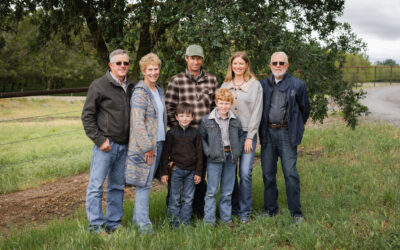
Breed all the cows at one time
By Katie Alexander
If your opinion of artificial insemination (AI) for the beef cattle herd is “been there, done that,” you may want to give it another look.
New protocols and synchronization methods have eased the pressure.
“There’s no question that fixed-time AI has gotten easier,” says Cliff Lamb, University of Florida animal scientist. That’s important for those who tried other AI programs in the past but did not find success, and also noteworthy for those who have never tried AI.
Fixed-time protocols allow the average producer who doesn’t know how to AI to synchronize them and schedule a technician to come out and breed the cows.
Pregnancy rates vary by herd and environment, not perfect by any means, but getting better.
“We’ve found that fixed-time insemination has worked so well in heifers and cows with the new protocols that we’ve gotten to where we can get more cattle pregnant on the first day of your breeding season,” says Willie Altenburg, Select Sires beef development advisor.
That’s because it allows for a better conception rate – up to 60% – on the first day of breeding season, he adds.
AI reduces the uncertainty of unproven bulls and serves as a risk management tool., too.
“The advantage of using proven genetics in the heifers, the ability to synchronize and get proven calving-ease genetics – that is where we see the most use of AI today,” Altenburg says. “Then you can use that over into the cowherd, of course.”
Improvements in growth traits, carcass merit and replacement heifers are only the start, he says.
“It’s a stepping stone of just how much the genetics are being utilized more and more to incorporate things like carcass traits to harvest cattle with outstanding carcass merit to enhance the eating quality so that our producers and consumers enjoy that benefit,” Altenburg says.


The large variety of genetics available with AI shouldn’t intimidate producers, he says. One strategy is to narrow choices by selecting for specific EPDs (expected progeny differences).
“The use of EPDs and the database from breed organizations has extended the use of highly proven sires,” Altenburg says. “DNA-marker-assisted selection is the next step.”
AI-sired calves often carry many advantages, too, such as the genetics of bulls with the total package.
“It allows you to improve the reproductive efficiency of your cowherd,” says Lorna Marshall, Select Sires vice president of beef genetic programs. “We shorten your calving interval, we get more of those cows to calve in the first 21 days.
“The other advantage is that it lets you select genetics that are going to fit your marketing environment as well as your feed environment.” she says.
All agree that companies promoting fixed-time AI have trained enough people available to send them out to farms for custom breeding assignments on any given day.
You may also like
Legacy in the Golden Land
On a quiet stretch of Northern California rangeland, a different story unfolds. The Borror family’s legacy modestly speaks through the cattle they raise, the ground they steward. The generations who’ve made a life here demonstrate commitment to doing things right, even when no one is watching.
Marbling, Feet and Fertility: Are they related?
The Angus breed has enough genetic diversity to allow breeders, and their commercial bull customers, to make progress across multiple traits simultaneously. One bloodline may be high in marbling but does not check the boxes you need for other traits. That does not mean marbling is the cause—it simply means your search for the ideal genetic pairing is not done.
Working for Premiums
The commercial Angus rancher from Collyer, Kansas, came back for daily homework in 1999 after a year at college. For 25 years now, he’s studied all the ways to grow his family’s W6 Cattle cow-calf herd with Angus at the base. Guided by data, Walt worked to improve the herd from zero Primes to averaging 60 percent. Learning what drives premiums prompted improvement.



